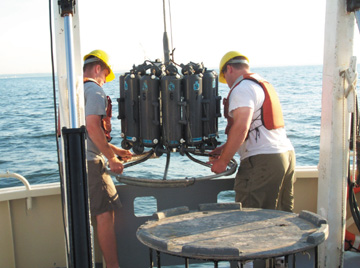
Geotimes Home | AGI Home | Information Services | Geoscience Education | Public Policy | Programs | Publications | Careers

 When Christine
Todd Whitman, director of the Environmental Protection Agency, launched the nation-wide
Water Quality Trading Policy on Jan. 13, she cited Connecticut as a prime example
of what can be achieved under the new policy. The state has trimmed $200 million
from the projected cost of restoring oxygen to Long Island Sound by allowing sewage
treatment plants to trade rights to pollute.
When Christine
Todd Whitman, director of the Environmental Protection Agency, launched the nation-wide
Water Quality Trading Policy on Jan. 13, she cited Connecticut as a prime example
of what can be achieved under the new policy. The state has trimmed $200 million
from the projected cost of restoring oxygen to Long Island Sound by allowing sewage
treatment plants to trade rights to pollute. |
Geotimes Home | AGI Home | Information Services | Geoscience Education | Public Policy | Programs | Publications | Careers |